This year, I boarded my first scuba diving liveaboard in Komodo National Park, Indonesia. I’ve been diving for 15 years, but the idea of being stuck in tight quarters at sea with no escape never appealed to me—until the temptations of manta season at one of the most spectacular dive sites on Earth convinced me to finally give it a shot!
Komodo is famous for its wild currents. They can be intimidating, but they’re what take a dive destination from meh to magnificent! Why? Because currents carry swirling nutrients that lure in the ocean’s biggest filter feeders. For manta rays, whale sharks, and schools of fish, it’s an underwater buffet (kind of like those sushi conveyor belt restaurants that are popping up everywhere).
After all these years as a diver, I still want to squeal excitedly into my regulator every time I see a manta ray, so when we saw a pair of them performing their graceful, barrel-rolling ballet on our 4th dive in Komodo, I had to work hard not to scare it away with my overexcited bubbles.
Later that night, between spoonfuls of fried rice and sambal (a chilli-based sauce common in Southeast Asia) I was excited to share with the other divers why I came to Komodo: for a citizen science mission to help manta scientists by uploading my photos to a global database run by the nonprofit, MantaTrust.
You don’t need a PhD in marine biology or to pay thousands to join a conservation volunteer program—just a GoPro and a bit of luck! Here’s exactly how it worked, what I did, and how you can do the same thing the next time you dive (or even just snorkel!) with mantas.
Why Komodo is one of the best places on earth to swim with (and photograph) manta rays
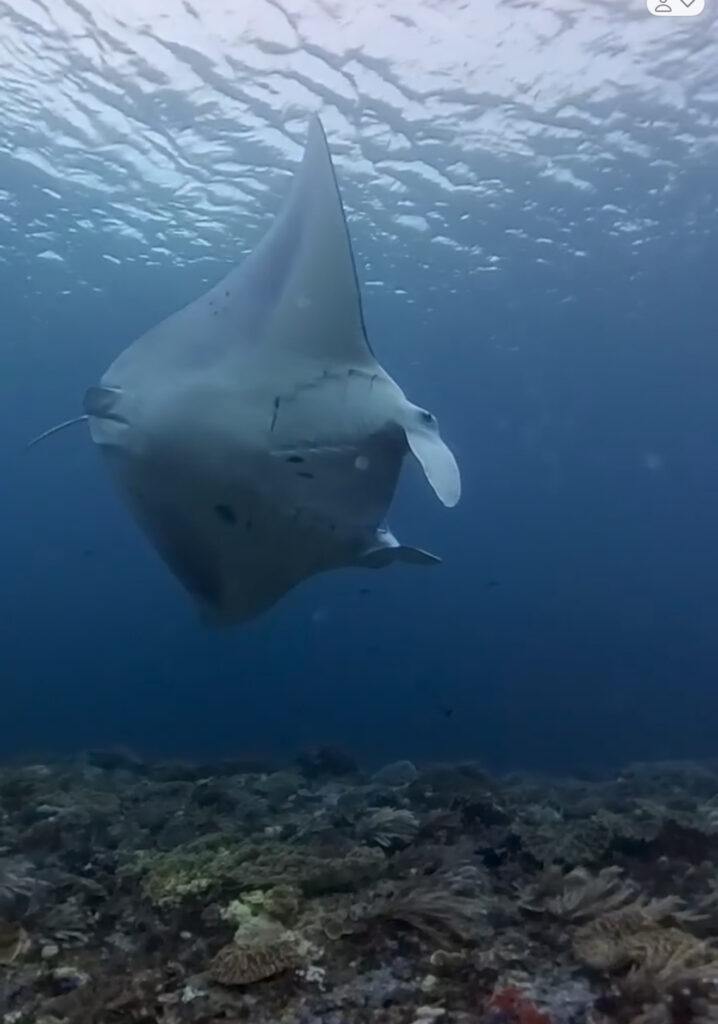
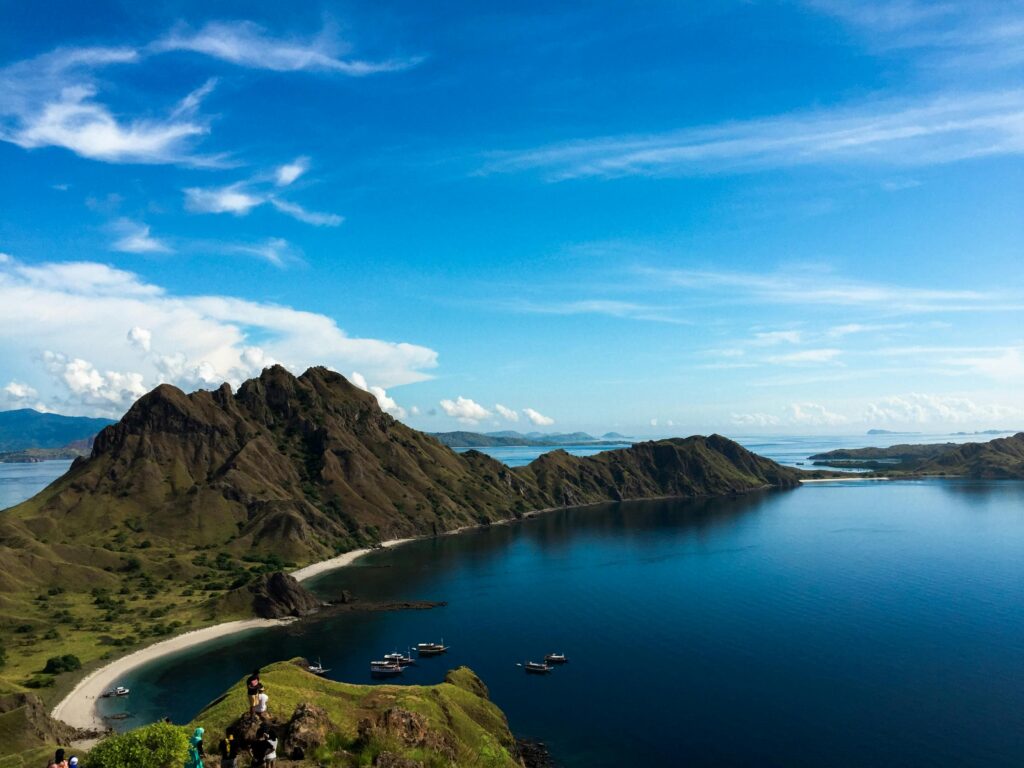
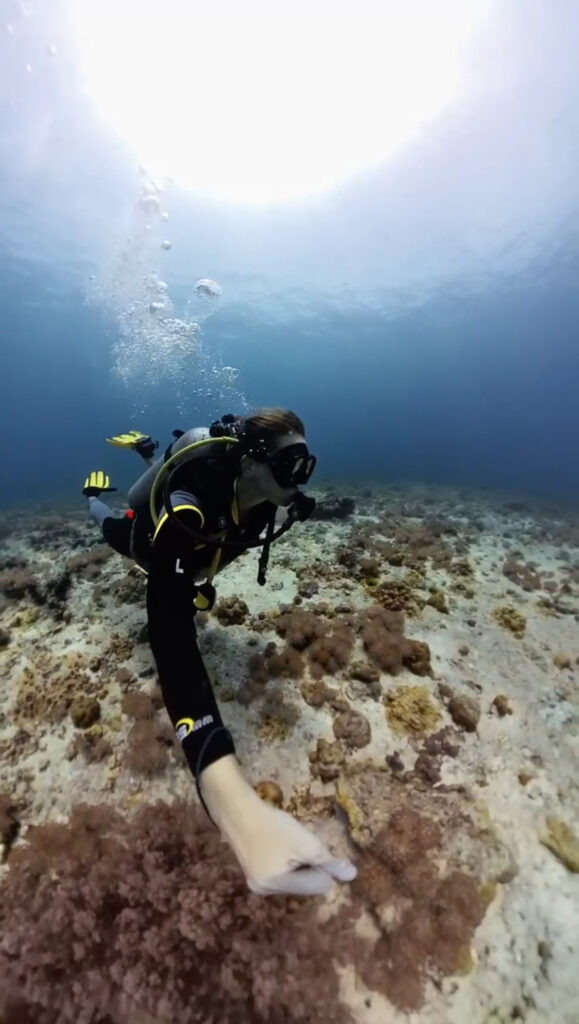
Komodo National Park in Indonesia isn’t just about dragons and pink beaches (neither of which I actually got to see!). Beneath the surface, it’s one of the most biodiverse places on the planet. Towering reef walls pulse with zippy tropical fish, purple sea fans sway in the current, and white tip reef sharks cruise past vibrant coral gardens, open blue water, and sandy flats. It’s already one of the best dive spots on Earth—but add manta rays into the mix, and it’s unmissable.
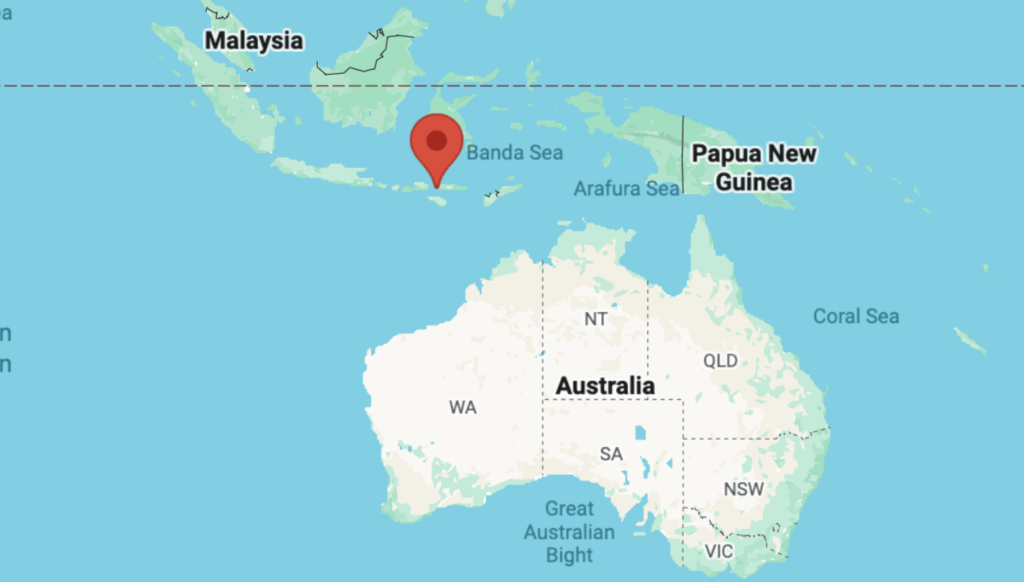
Scientists have identified thousands of individuals here, and the park is a year-round hangout for reef mantas (Mobula alfredi). So no matter the season, you’re likely to be in luck!
It’s a dreamy habitat if you’re a manta because of the:
- Plankton buffets – strong currents funnel in endless food.
- Cleaning stations – coral bommies, where fish give them spa treatments.
- Social scene – mantas gather for feeding frenzies and even courtship “trains” (imagine a conga line of mantas and you’ve got the picture).
Can any recreational diver help with manta conservation? How?
Yes! Any recreational diver, free diver, or snorkeler can contribute to real manta science. A lot of people want to get involved in manta ray volunteer projects and or be a manta ray conservation volunteer, and this is a great way to do it for free (it literally costs 0 dollars!).
Here’s how:
Every manta ray has a unique pattern of spots on its belly—like a fingerprint on a human. If you snap a photo of that underside and share it to a manta ray ID database, scientists can identify the individual, track their movements, and monitor populations over time.
This process is called photo identification (photo-ID), and it’s the backbone of manta ray conservation projects around the world. Manta Trust has the largest database of its kind, and per their website, “The MantaBase database has identified over 10,000 individual reef (Mobula alfredi) and oceanic (Mobula birostris) mantas through more than 100,000 photographed sightings from over 70 countries.” Wow!

Put simply, your blurry underwater vacation photo could be the reason we know where a manta hangs out, feeds, or migrates to next!
How I contributed to manta conservation on my dive
Here’s what actually went down:
- Step 1: The encounter – On a dive at Manta Point, three mantas swooped overhead. I scrambled with my GoPro, keeping a calm, respectful distance (mantas are easily frightened off by diver’s movements and bubbles, so try to keep it cool!).
- Step 2: The shot – I managed to capture the underside of two different rays. It’s not easy when you’re fighting currents, but I found the best way to do it was to take a video, then pull screen grabs from it later. This helped me not miss a particular shot, and science doesn’t care if your photo isn’t professional quality as long as the belly spots are visible!
- Step 3: Uploading – I went to MantaTrust.org and clicked the MantaBase tab. I filled in the dive site, date, depth, and some other information, and attached my photos.
- Step 4: The payoff – Success! I got an email confirmation that your submission was received. You may even get a follow-up email a few weeks later that one of your manta photos matched an already-identified individual (helping build that manta’s profile) or that your manta is new to the database!

It felt like I’d joined a secret ocean detective squad—the kind where your only job is to take way too many pictures of giant sea pancakes.
How you can help manta rays when you dive (step-by-step)
Here’s your easy step-by-step guide to becoming a citizen scientist on your next dive:
- Pick the right destination
- Komodo, Raja Ampat, the Maldives, Mozambique, and Hawaii are some of the best spots to see mantas. But remember—wildlife sightings are just that: wild! Even if you go to a manta hotspot, you’re not guaranteed to see one. So enjoy your dives for what they are, and be ready with your camera if you’re lucky enough to see a manta!
- Bring your camera
- A GoPro or any underwater camera works fine—you don’t need a professional setup! Just make sure you capture the underside of the manta.
- Take the right shot
- Focus on the belly—that’s where the ID spots are.
- Don’t chase or harass the manta.
- Hover calmly and let them glide over you.
- Upload your photos
- Go to MantaTrust.org and click MantaBase on the top right.
- Fill in all of the information that you can and attach your photos. Voilà—you’ve done it!
Why your manta ray photos matter so much
Scientists can’t be everywhere at once, but Komodo and other manta hotspot destinations have hundreds of dive boats going out every day! And those boats have thousands of divers with cameras. By turning those photos into data, scientists can:
- Track manta migrations.
- Monitor population growth or decline.
- Spot threats like fishing pressure or habitat loss.
- Build evidence for stronger protections in marine parks.
Your photo could literally prove that a manta migrated 200 miles, or that individuals are returning year after year to the same cleaning station. That’s huge for conservation!
Quick FAQ about manta conservation (for recreational divers)
Q: Can recreational divers really help manta conservation?
A: Absolutely. Your belly-spot photos contribute to global databases used by scientists.
Q: How do I photograph a manta for science?
A: Stay calm, let them approach, and snap a picture or video of the underside (belly). Don’t go out and buy a fancy camera setup or extra gear—a GoPro works perfectly!
Q: Why are manta rays important to the ocean?
A: They’re filter feeders that help regulate plankton populations, and they’re also key indicators of ocean health. Plus, sustainably managed manta tourism supports local economies!
Q: Is it safe to dive with manta rays?
A: 100% yes. They’re gentle giants. The only danger is falling in love, booking too many dive trips, and bankrupting yourself 😅.
I went to Komodo hoping to see mantas, and I left knowing I’d tried to help them. That’s the coolest thing about citizen science for scuba divers—it reminds you that adventure travel doesn’t have to be just for fun. You can often be a part of protecting the animals and environment you came to see!
So if you’re diving in Komodo (or anywhere mantas fly through), don’t just swim with them—consider helping them by uploading the photos you already know you’ll take dozens of.
If you’re looking for more scuba diving or outdoor adventure travel ideas, be sure to check out some of my related content!
- My guide to diving with thresher sharks in Malapascua (cost breakdown, best dive shops, what to bring, etc!)
- My guide to scuba diving the Lanai Cathedrals in Maui, Hawaii
- My know-before-you-go travel guide to seeing orangutans on a jungle river cruise in Borneo!
- My experience searching for the world’s smallest penguin species, the little blue penguin, in New Zealand!
This blog may contain affiliate links, which means that at no cost to you, I may earn a small commission of any products sold. I only feature products that I believe in and use. Your support means the world to me and allows me to host this website!
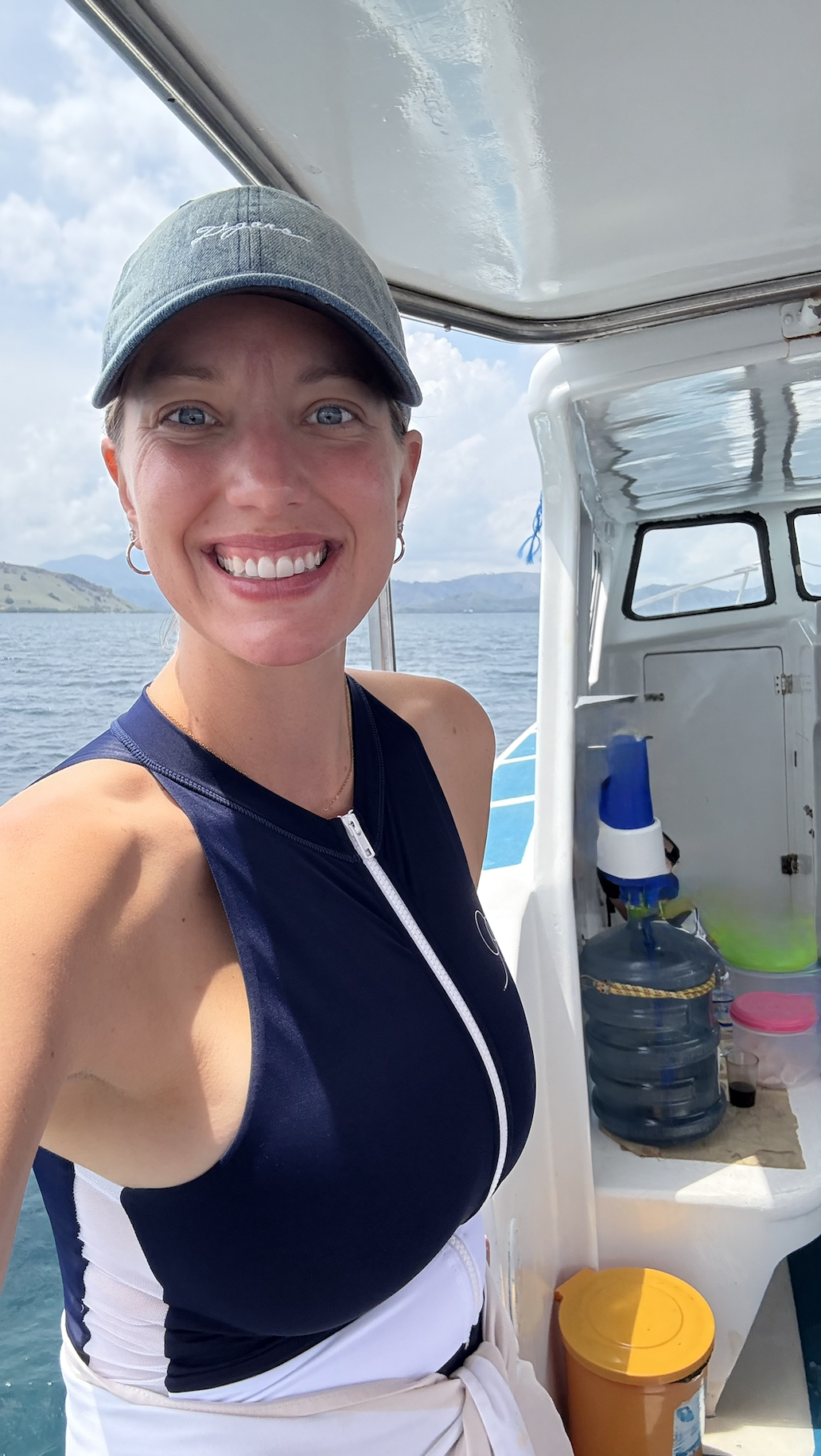
LEAVE A COMMENT